Paridhaan: Celebrating the myriad hues of India
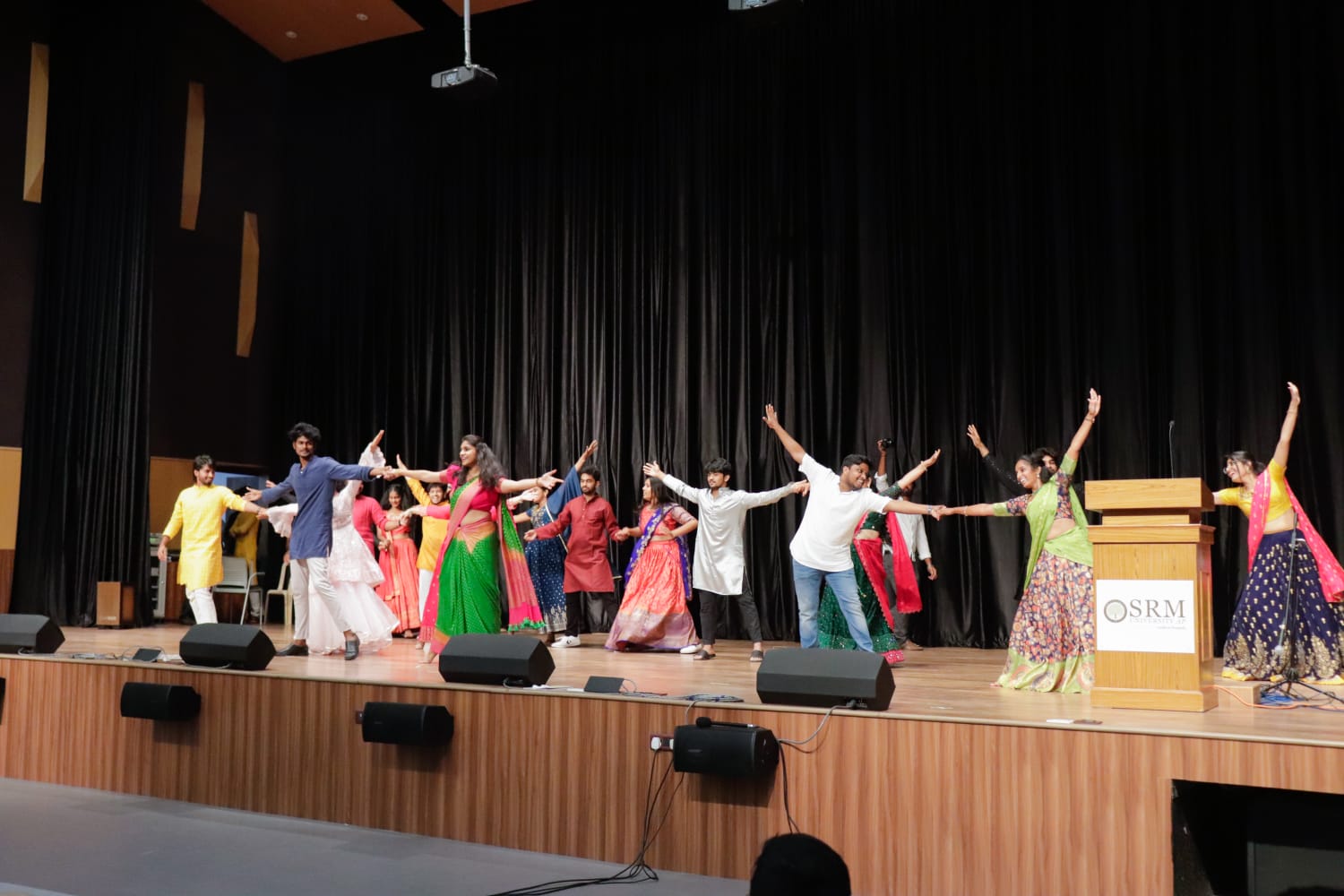
“India is the One land that all men desire to see and having seen once, by even a glimpse, would not give that glimpse for all the shows of all the rest of the globe combined” – Mark Twain
His words express the wonder of experiencing the myriad shades of culture thriving on the Indian landscape. Celebrations marking the beauty of our enriching tradition are indeed reminders of the boundless diversity of this country. An ethnic day is an occasion to look back and marvel at the greatness of Indian civilization. It endows us with an opportunity to embrace and rejoice in the shimmering diversity of our motherland. Such good times are meant to be cherished forever as it ties together the manifold differences our people foster.
The Department of Student Affairs proudly organised ‘Paridhaan’, an Ethnic-Cultural event for celebrating the rich Indian heritage. Students came decked up parading the exquisite fashion culture existing across different parts of the nation. The day was brimming with high-sprits and festivity as students from different parts of the country came attired in their traditional outfits flaunting their cultural legacy. An array of dance and musical performances was organised for students to put their talent and vigour on display.
There were programmes ranging from solo musical performances to dance medleys and fashion shows. The stage was set on fire with a live opera performance of Sanjana, who mesmerised the crowd with her mellifluous voice. Equally stunning was the musical entertainment of Amrit who weaved magic with his Santoor, playing the Hamsadhwani raga. Each performer enthralled the audience with different musical stylings, such as mashups, raps and so on. The crowd was also clamouring with joy at the rocking dance performances by the students of the dance club.
The major highlight of the day was the fashion show. The participants adorned the stage with ravishing ethnic outfits representing their cultural distinctiveness. There were portrayals of different dressing styles of India as well as countries like China and Africa. Donning the garbs of different regions from Assam to Gujarat and Kerala, even dating back to the times of the Mughal Era, the show dazzled the crowd with enchanting hues. The celebrations came to a closure with a few more delightful performances. All the SRM dignitaries including the Vice-Chancellor, Prof V S Rao, took part in the celebrations and congratulated the students for making the event a huge success.
- Published in News, student affairs news
Launching antenna-multiplexer for seamless IoMT connectivity
Dr Divya Chaturvedi, Assistant Professor, Department of Electronics and Communication Engineering, has come up with an exciting proposal for enhanced connectivity and high-speed data transmission across the Internet of Medical Things (IoMT) devices. Her research paper titled “Design of Antenna-Multiplexer for Seamless On-Body Internet of Medical Things (IoMT) Connectivity” has been published in the journal ‘IEEE Transactions on Circuits and Systems II: Express Briefs’, having an impact factor of 3.71. It was published in collaboration with Dr Arvind Kumar from Vellore Institute of Technology and Dr Imaculate Rosaline from Ramaiah Institute of Technology, Bangalore.
The research looks into the design and development of a multi-band self-triplexing antenna for Medical Things (IoMT) applications. The antenna is designed to operate at 5.2, 5.5 and 5.8 GHz and self-isolation is achieved below -23.9 dB. It also offers seamless communication links to other devices operating at the same frequencies. The designed antenna is cost-effective and compact in size, that can easily fit into any implantable medical device. To avoid the harmful effect of radiation, the SAR value should be <1.6 W/kg. The SAR for this antenna is achieved at 0.362 W/kg in a very simple profile. Due to its compact size, the antenna can be easily mounted in a wireless portable device. The self- triplexing property of the device also enables full-duplex communication between different devices in a single antenna. This design suggestively simplifies the density of the RF front-end subsystem and leads to a simple and efficient communication system.
Abstract of the Research
Here, a compact design of antenna-multiplexer is engineered specifically to meet the stringent requirement imposed by intricate subsystems operating at 5.2, 5.5, and 5.8 GHz frequency bands for Internet of Medical Things (IoMT) applications. The proposed design includes a hexagonal-shaped substrate integrated waveguide (HSIW) cavity, tripole-shaped radiating slot, tuning vias, and three inset microstrip feedlines. A tripole-shaped slot is imprinted on the top of the SIW. This slot subdivides the cavity into trio-radiating segments and each segment offers a single frequency band. Further, the frequency bands are tuned at 5.2/5.5/5.8 GHz. The design maintains mutual port isolation better than 23.9 dB. Compared with the conventional tri-frequency antennas, the proposed design is highly compact and doesn’t need any additional circuitry to improve the port isolations. The measured results confirm the expected performance of the design. Furthermore, the proposed antenna is optimized within an implantable medical device (IMD) and simulated inside a realistic Human Head model at a depth of 3 mm and the Specific Absorption Rate (SAR) value is estimated. The SAR values are well below 0.362 W/Kg at the functioning bands due to the unidirectional radiation pattern from the antenna.
Her future research plan includes designing and developing a cost-effective bra-like prototype of Antenna-Array Sensors for breast cancer detection.
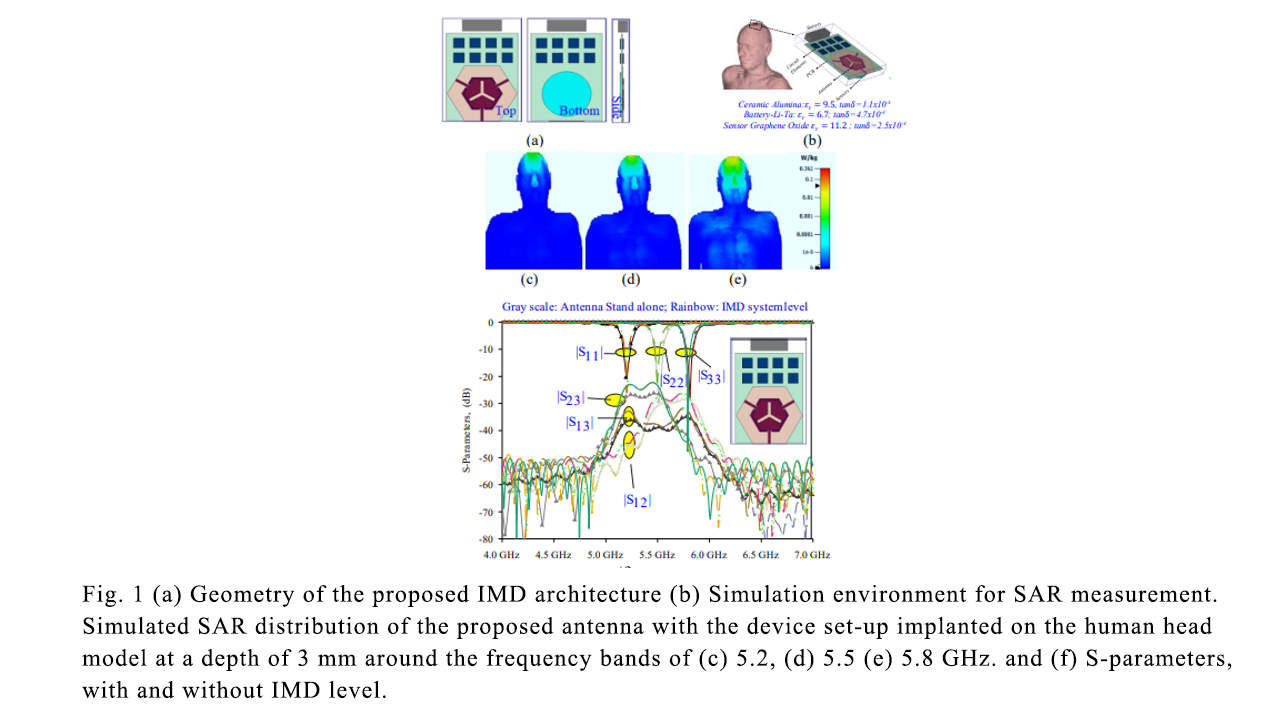
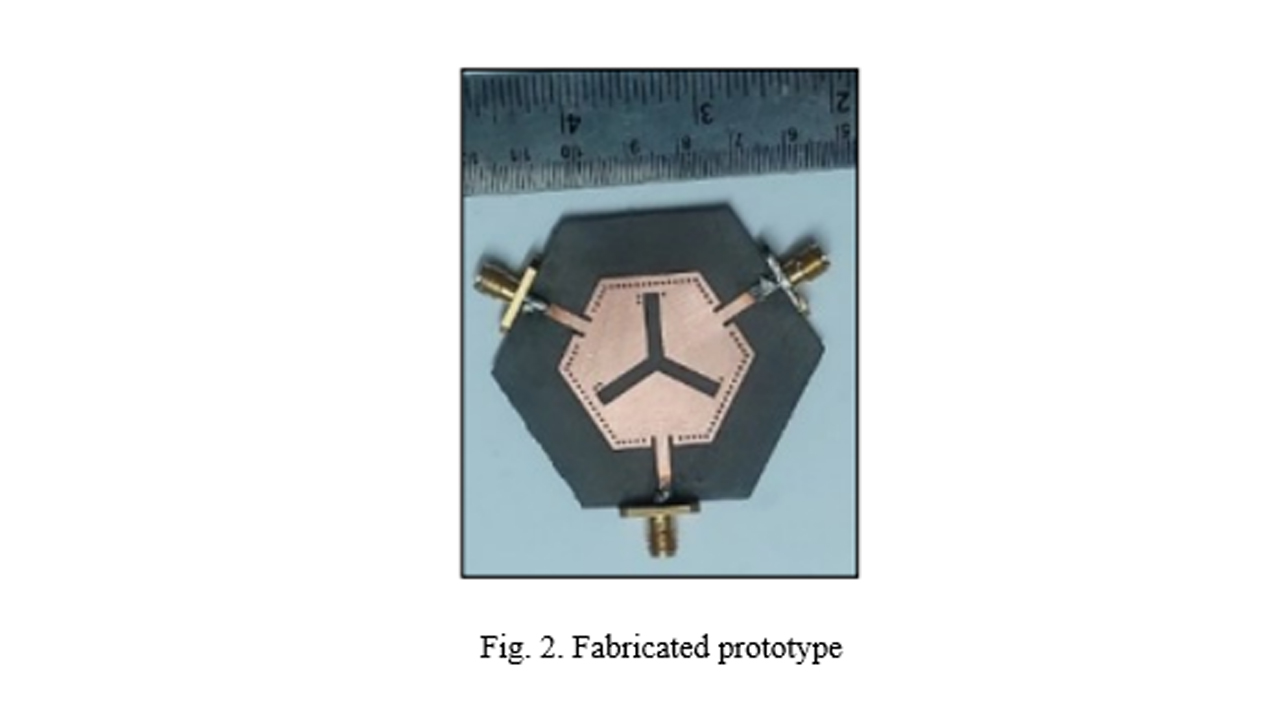
- Published in Departmental News, ECE NEWS, News, Research News
Know your style of writing
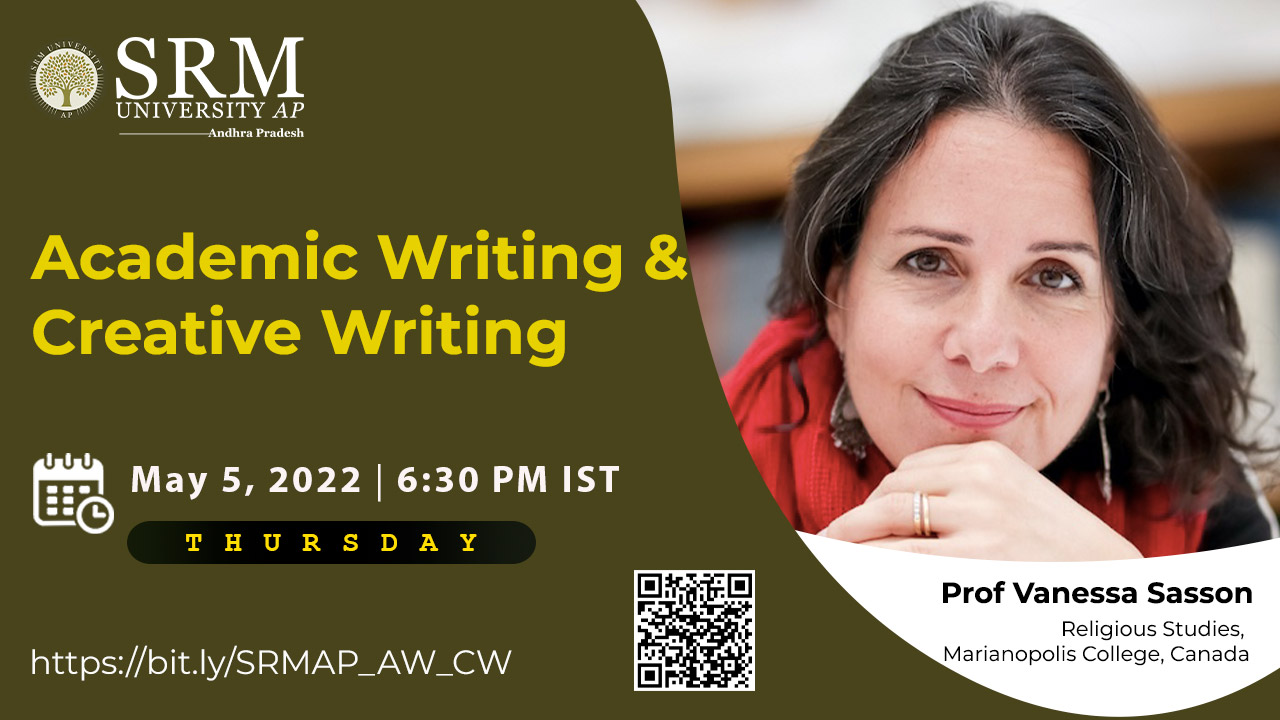
The art of writing can be branched out into different types depending upon the purpose of each piece of writing. You might have come across varied styles of writing such as creative writing, academic writing, technical writing and many more. Have you ever tried to deduce the difference between all these writing styles? Well, we offer you an informative session that will help you gather a better understanding of different styles of writing.
The Department of English has scheduled a webinar on the topic “Academic Writing & Creative Writing” under the theme “Language and Society” with Prof Vanessa Sasson as the keynote speaker.
Date: May 05, 2022
Time: 6.30 PM IST
Academic writing and creative writing seem to be pulling the act of writing and the writers in two different directions. A lot of writers, especially aspiring writers, tend to think of both genres as catering to very different audiences and fulfilling very different needs in very different contexts. Does that mean you can be only one and not the other? Do you have to choose? And how do you decide what to commit to? In this talk, Prof Vanessa Sasson will share her experience of writing in both capacities and discuss the joys and challenges of both.
About the Speaker
Vanessa R Sasson is a professor of Religious Studies in the Liberal Arts Department of Marianopolis College where she has been teaching since 1999. She is also a Research Fellow at the University of the Free State and a Research Member for CERIAS at UQAM. She has published widely as a scholar, with a number of academic books to her credit. Her most recent book was published by the University of Hawaii Press (2021) and is entitled, Jewels, Jewelry, and Other Shiny Things in the Buddhist Imaginary. Yasodhara and the Buddha (Bloomsbury, 2021) is her first novel. She is currently completing the sequel.
Join the Webinar to master the art of writing!
- Published in Departmental Events, English, English Current Happenings, Events
Engineering and research challenges in building smart cameras
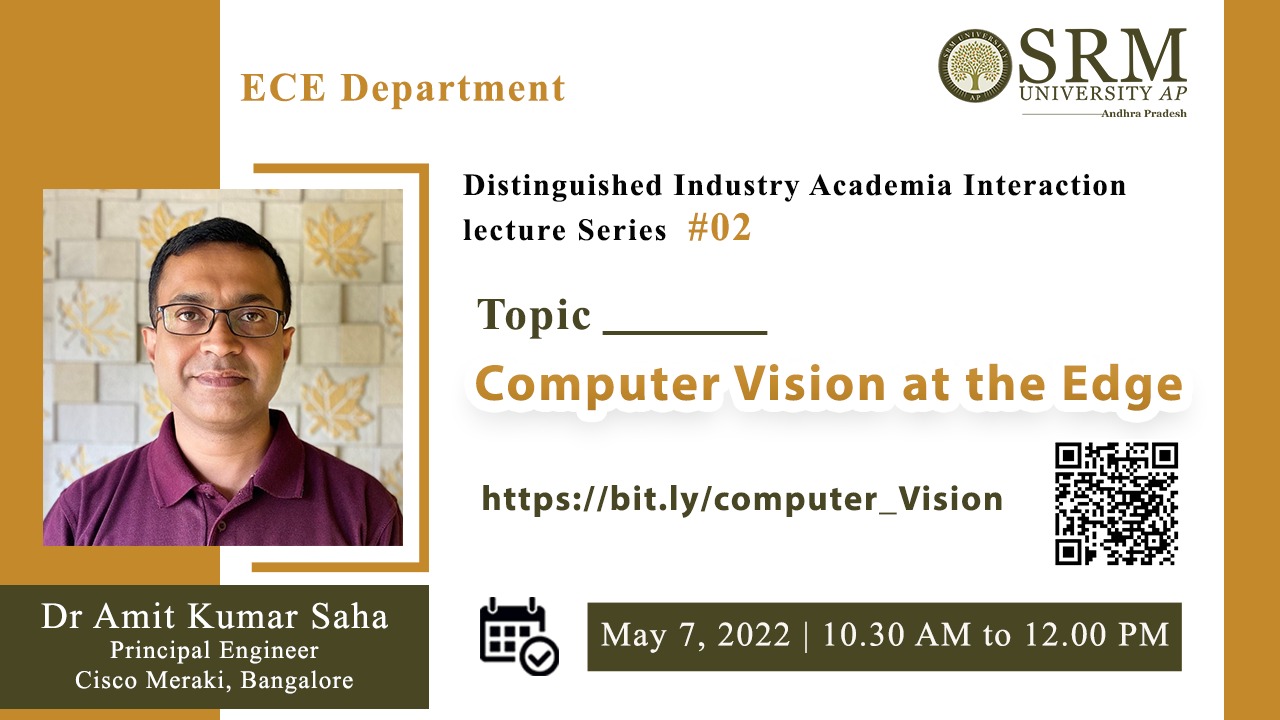 Machine Learning has started its move from the cloud to the periphery of the network. Today’s edge devices are becoming smarter and are no longer the dumb devices that would simply transmit the data to some central location. The Department of Electronics and Communication Engineering is conducting the 2nd department distinguished Industry-Academia Interaction lecture in the ECE DDIAIL series. Dr Amit Kumar Saha, Principal Engineer at Cisco Meraki, Bangalore, will deliver a talk on the topic ‘Computer vision at the edge’.
Machine Learning has started its move from the cloud to the periphery of the network. Today’s edge devices are becoming smarter and are no longer the dumb devices that would simply transmit the data to some central location. The Department of Electronics and Communication Engineering is conducting the 2nd department distinguished Industry-Academia Interaction lecture in the ECE DDIAIL series. Dr Amit Kumar Saha, Principal Engineer at Cisco Meraki, Bangalore, will deliver a talk on the topic ‘Computer vision at the edge’.
The talk will focus on the evolution of a specific type of edge device, the surveillance camera, from the traditional CCTV model to the smart camera model. It will discuss some of the engineering and research challenges in building smart cameras that lie at the periphery of the network.
Date: May 7, 2022
Time: 10.30 am to 12.00 pm IST
About the speaker
Dr Amit Kumar Saha is the Principal Engineer at Cisco Meraki, Bangalore. He received his PhD degree from Rice University in 2007. Prior to that, he obtained his BTech degree from IIT Kharagpur as a recipient of Dr B C Roy Gold Medal in 1999 for being the single graduating student with the best mix of academics and extracurricular activities. Dr Amit explores the next generation of technology at the intersection of networks, distributed systems, and data science, with a special emphasis on system-wide design. He is part of Cisco Meraki’s Camera Intelligence team and enables Cisco’s internal products as well as customers better manage their AI/ML life cycles by making it easier to train and tune models and deploy distributed machine learning workloads. He passionately seeks out opportunities to give back to the community through talks, research collaborations, organising conferences, and as visiting faculty at several top institutes in India.
Join the webinar and learn from industry professionals
- Published in Departmental Events, ECE Events, Events, Webinars
The network of mindfulness, leadership, and performing arts
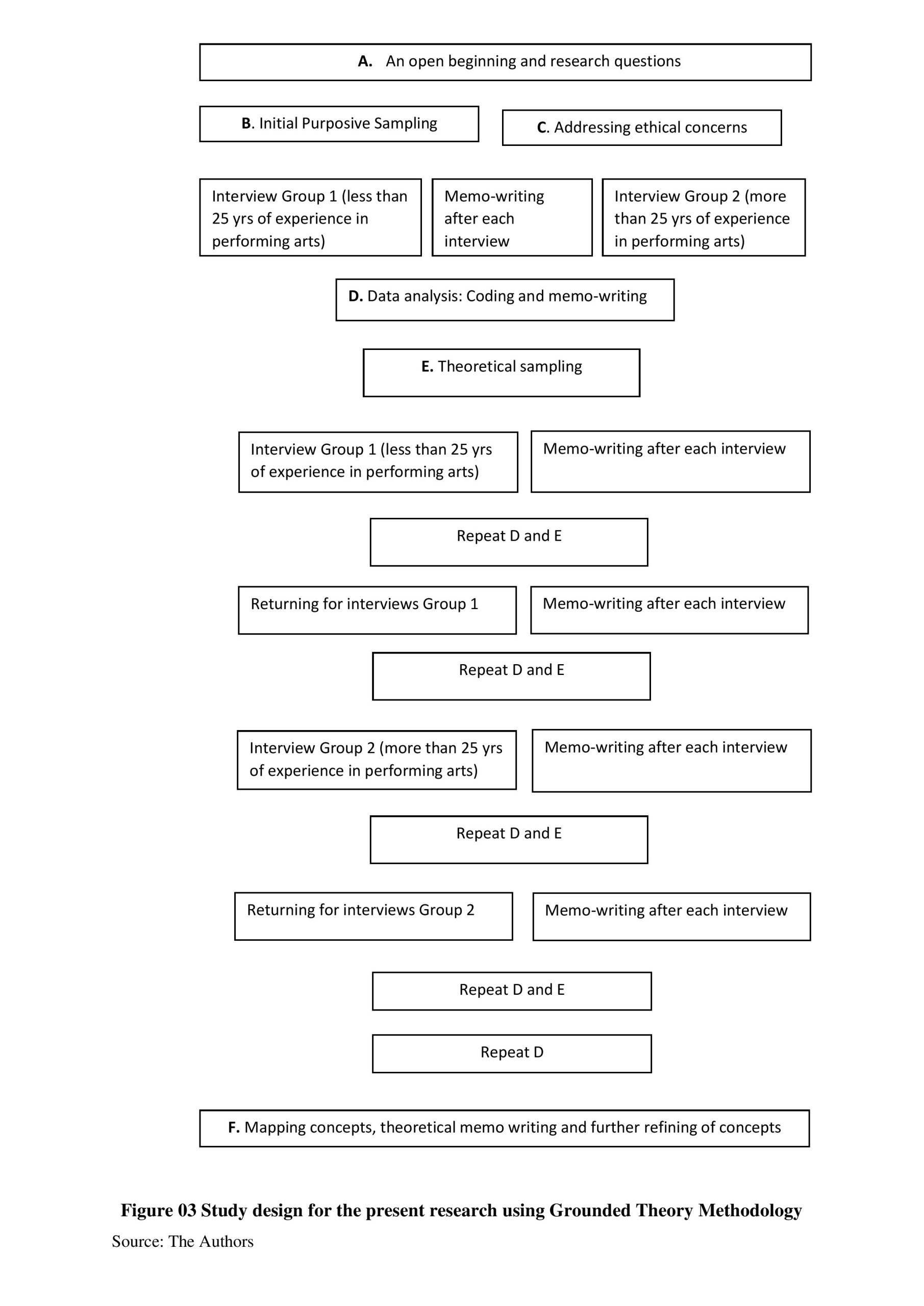 Mindfulness, leadership, and performing arts have deep interconnections that, if approached theoretically, can give productive outcomes to implement in workplaces and potential employees. The School of Entrepreneurship and Management Studies is delighted to inform you that the paper titled ‘Exploring mindfulness and leadership development: Lessons learned using grounded theory through the study of the performing arts’ by Dr Vimal Babu, Associate Professor, got published in the journal FIIB Business Review published by SAGE publication.
Mindfulness, leadership, and performing arts have deep interconnections that, if approached theoretically, can give productive outcomes to implement in workplaces and potential employees. The School of Entrepreneurship and Management Studies is delighted to inform you that the paper titled ‘Exploring mindfulness and leadership development: Lessons learned using grounded theory through the study of the performing arts’ by Dr Vimal Babu, Associate Professor, got published in the journal FIIB Business Review published by SAGE publication.
Abstract of the research
The research looks at mindfulness mechanisms and leadership characteristics as they are expressed in performing art forms. This qualitative study examines major categories to create a theoretical framework for mindful leadership development using performing arts. The present study employs the research paradigm of interpretivism to investigate respondents’ experiences and unique phenomena. The Grounded theory (GT) methodology helps explore grounded data and the development of theories. The abstract core category ‘Immense Concentration and Self-Control’ captures the abstract and inclusive meaning as understood by the sample respondents. The qualitative coding analysis aided in the investigation of the data-driven abstract phenomena. According to the findings of this study, all performing artists require a higher level of attention and self-control to demonstrate fascinating performances like Koodiyattam. A higher level of attention and self-control can be ensured based on increased mindfulness, identified leadership attributes, motivation components, values and beliefs, and personality dispositions of the performing artists. In-depth theoretical reflections on the relationships between the relevant categories are presented. The relationships between the five major categories of mindfulness processes, leadership abilities, motivation components, values and beliefs, and personality dispositions are very significant.
Explanation of the research
In simple terms, the present research explores the dynamics of mindfulness, leadership, and other potential variables enabling mindful leadership through performing arts, helping the practicing managers learn the innovative approaches to inculcate mindful leadership in employees in the workplace. To attain the research purpose, researchers studied the Koodiyattam performing arts as an instrument of mindfulness and leadership based on in-depth interviews of Koodiyattam performing artists. Since the present work explores deeper meanings and experiences to unearth unique and insightful phenomena, the Grounded Theory was appropriately employed as a methodology.
Practical implementation of the research
Managers and executives can derive valuable insights based on the present study. They would be able to understand the interconnections of mindfulness, leadership, and performing arts. It would offer them a better grounding to argue and introduce arts-based initiatives at their workplaces to enhance mindful leadership amongst potential employees aiming for well-being and career development in the organization. Several organizations have been experimenting with arts and its impact on business. However, the studies are in the nascent stage. Hence, more like-minded researchers need to join hands for diverse, global, and intercultural studies, focusing on different variables, including arts. The findings of the present research exhibit firm conviction in enlightening the industry practitioners to consider performing arts based mindful leadership training to enhance mindfulness and leadership attributes of the employees, in turn, making them productive and engaged workforce in the long run.
For this research, Dr Vimal babu has collaborated with Dr Amresh Kumar, IIM, Bodh Gaya, India, and Vipin Kumar, PMP, BT India, Gurgaon, India. His future research plans are to work in strategic leadership, negotiation, and conflict management using innovative qualitative research methods. Entrepreneurship education and circular entrepreneurship are also an area of much interest.
- Published in Departmental News, News, Research News
Learn the hacks and craft your resume
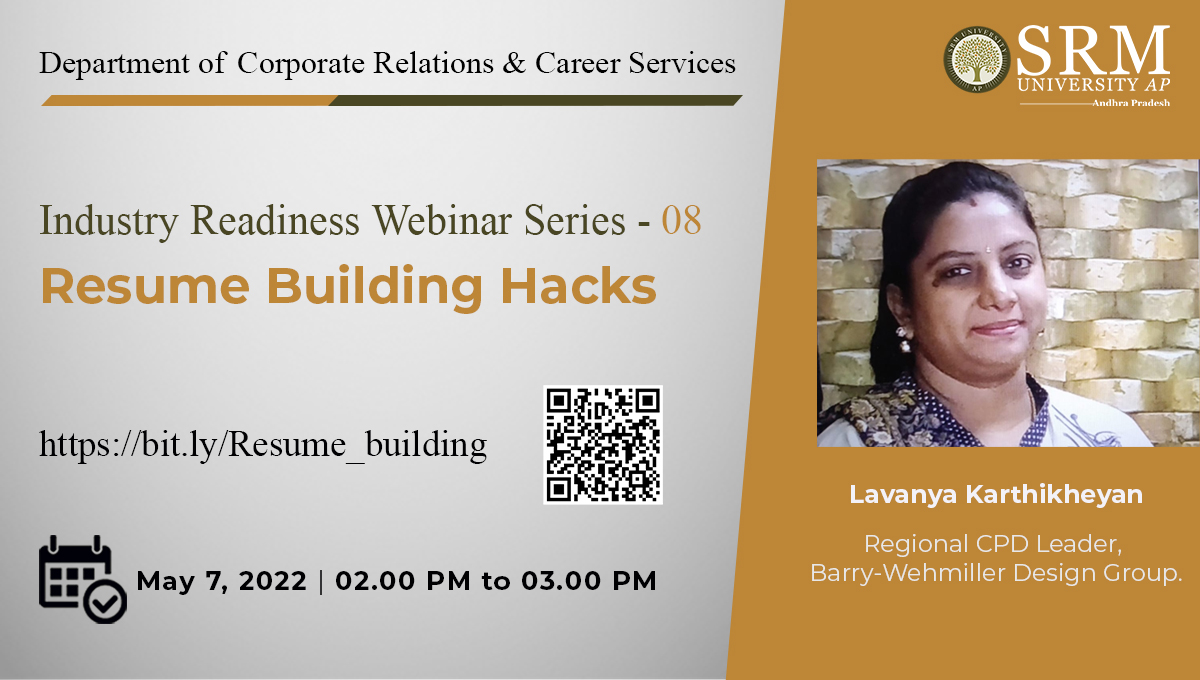 A resume is your gateway to the exciting opportunities ahead. It manages to pave the way for a variety of career options. Building a resume that can highlight your most attractive skills and experiences is the first step in entering a highly competitive job market. Making yourself visible in a pool of aspirants is the key to grab your chance. A resume is not a mere document but a tool for marketing yourself. Thus, crafting a resume deserves your time and attention.
A resume is your gateway to the exciting opportunities ahead. It manages to pave the way for a variety of career options. Building a resume that can highlight your most attractive skills and experiences is the first step in entering a highly competitive job market. Making yourself visible in a pool of aspirants is the key to grab your chance. A resume is not a mere document but a tool for marketing yourself. Thus, crafting a resume deserves your time and attention.
The Department of Corporate Relations & Career Services is organising the 8th segment of the industry readiness webinar series. The distinguished guest, Ms Lavanya Karthikheyan, Regional CPD Leader, Barry-Wehmiller Design Group, will deliver a speech on Resume building hacks.
Date: April 7, 2022
Time: 2.00 pm to 3.00 pm IST
Join the webinar and learn some critical hacks to build an excellent resume.
- Published in CR&CS, CR&CS Events, Events, Webinars
Igniting the innovative spirit
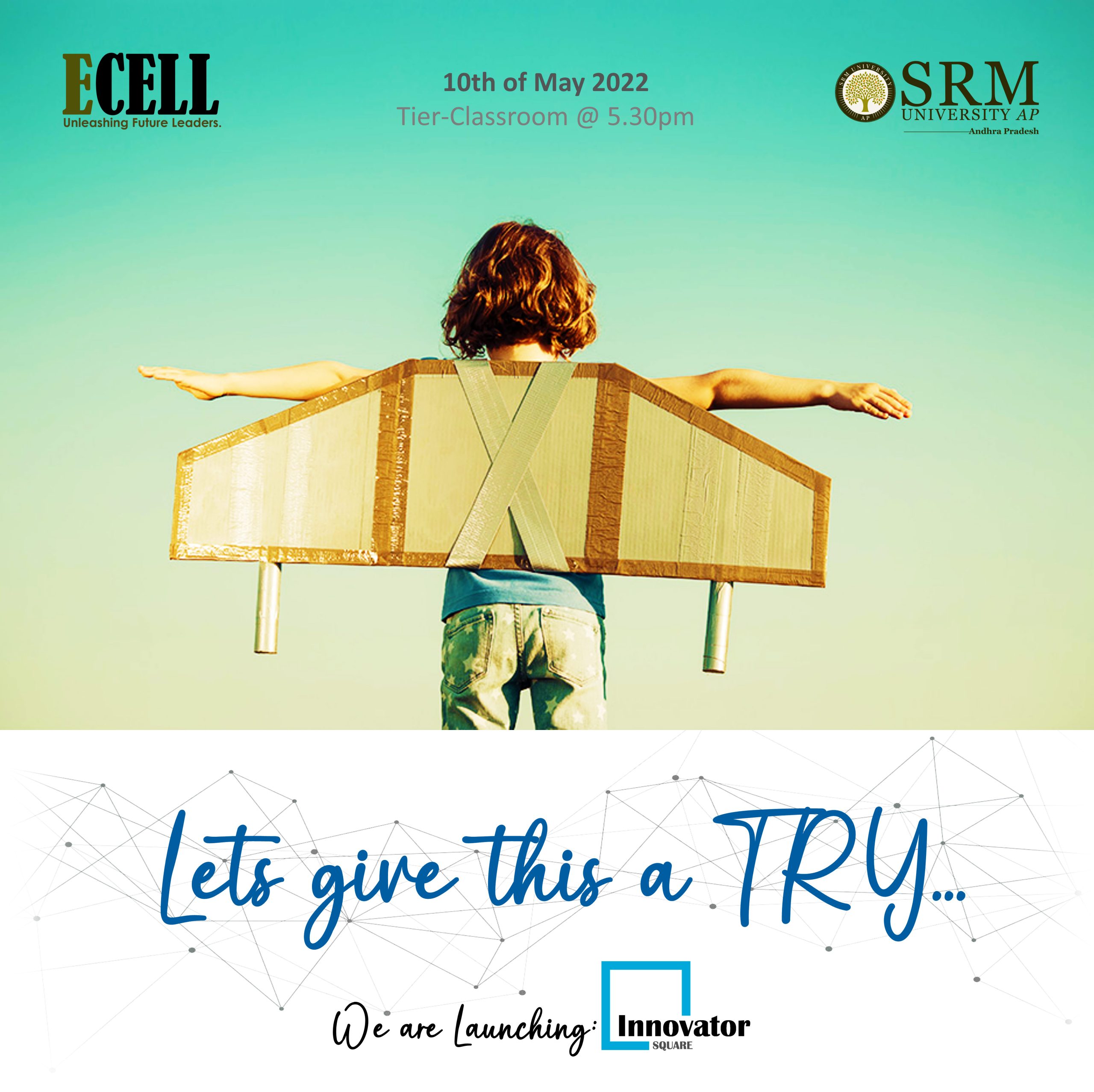
“The only way to discover the limits of the possible is to go beyond them into the impossible”- Arthur C Clarke
The indomitable spirit to give birth to the impossible is the magical force that keeps changing the face of the world. Every innovation, be it in the field of technology, medicine, or entrepreneurship, has paved the way for colossal changes simplifying life on earth. The sheer ability to think and innovate is what made human beings the ruling power. All the amenities and services that we revel in today would not have come into existence without the power to innovate.
As the world is surging ahead with far-reaching developments at an unimaginable pace, there is no question about equipping society to embrace these changes and equally be an unflinching source instigating such changes. Learning in the present era is beyond the ability to read, write and pass with flying colours. True learning does not take place without igniting the spark of creativity hidden inside every individual. The Entrepreneurship Cell has scheduled the launch of their latest endeavour “Innovation Square” to put on show the unrelenting power of innovation of our students.
Date: May 10, 2022
Time: 05.30 pm
Venue: Tiered Classroom
Join the session to behold some of the live innovations of our students at the campus.
- Published in Events, IDEA Events, Webinars
USA Mega Admission Drive; Climb the career ladder with SRM AP
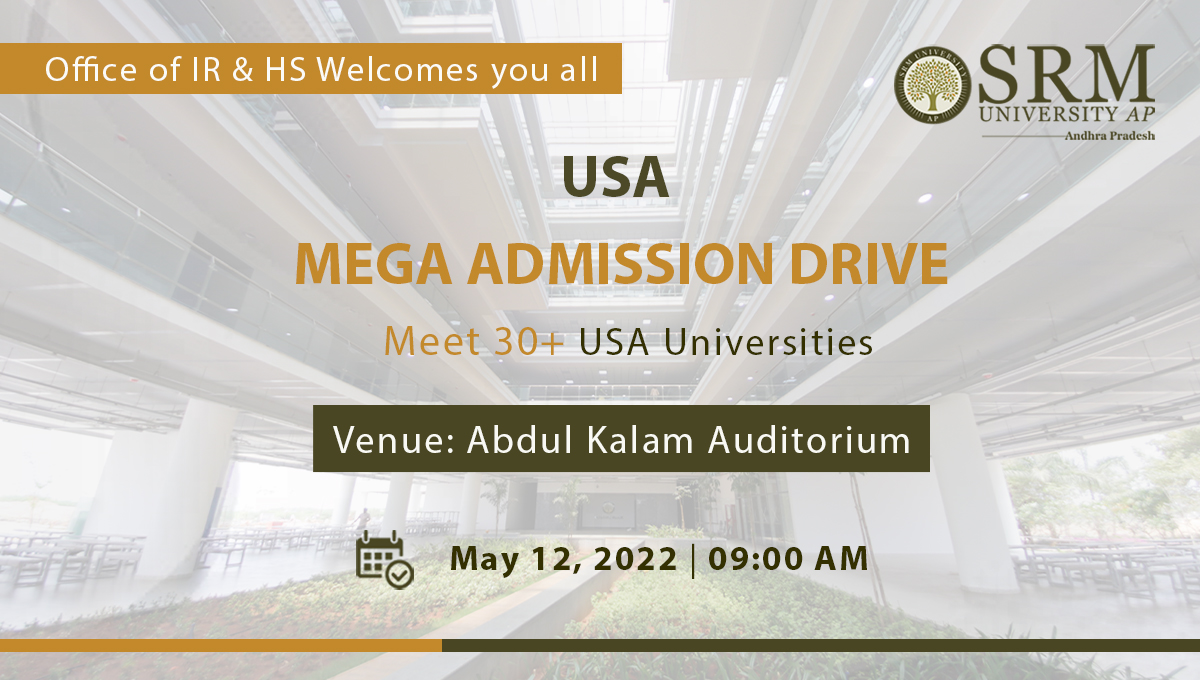 At times, face-to-face interaction will help you find specific answers to your specific questions there and then. This is super important when sorting out decisions about your higher education. SRM AP would like to navigate your road to the master’s admission you have always dreamt of. We urge you to open the door to global opportunities and confidently climb the career ladder.
At times, face-to-face interaction will help you find specific answers to your specific questions there and then. This is super important when sorting out decisions about your higher education. SRM AP would like to navigate your road to the master’s admission you have always dreamt of. We urge you to open the door to global opportunities and confidently climb the career ladder.
The Office of International Relations and Higher Studies welcomes you all to the USA Mega Admission Drive, an excellent opportunity to meet more than 30 USA Universities. In a world of information abundance, getting appropriate information is the real challenge. Thus, the university is delighted to offer you one-on-one interaction with the world-class university or institution representatives.
Date: May 12, 2022
Time: 9.00 am to 11.00 am IST
Venue: Abdul Kalam Auditorium
Get to know about the programs, eligibility, scholarships, internships, and post-study work opportunities through a more human element in your university search process. A deeper insight into the variety of options will guide you to apply for 2022/23 intakes. The admission drive allows submitting applications on the spot. The participating universities include renowned global universities such as North-eastern University, University of Massachusetts, Western Washington University, The University of Arizona, University of South Florida, Nova South-eastern University, University of Bridgeport, and many more.
Come and participate.
It’s your turn to explore the best career options awaiting you!
Scope for sponsored projects and its implementation
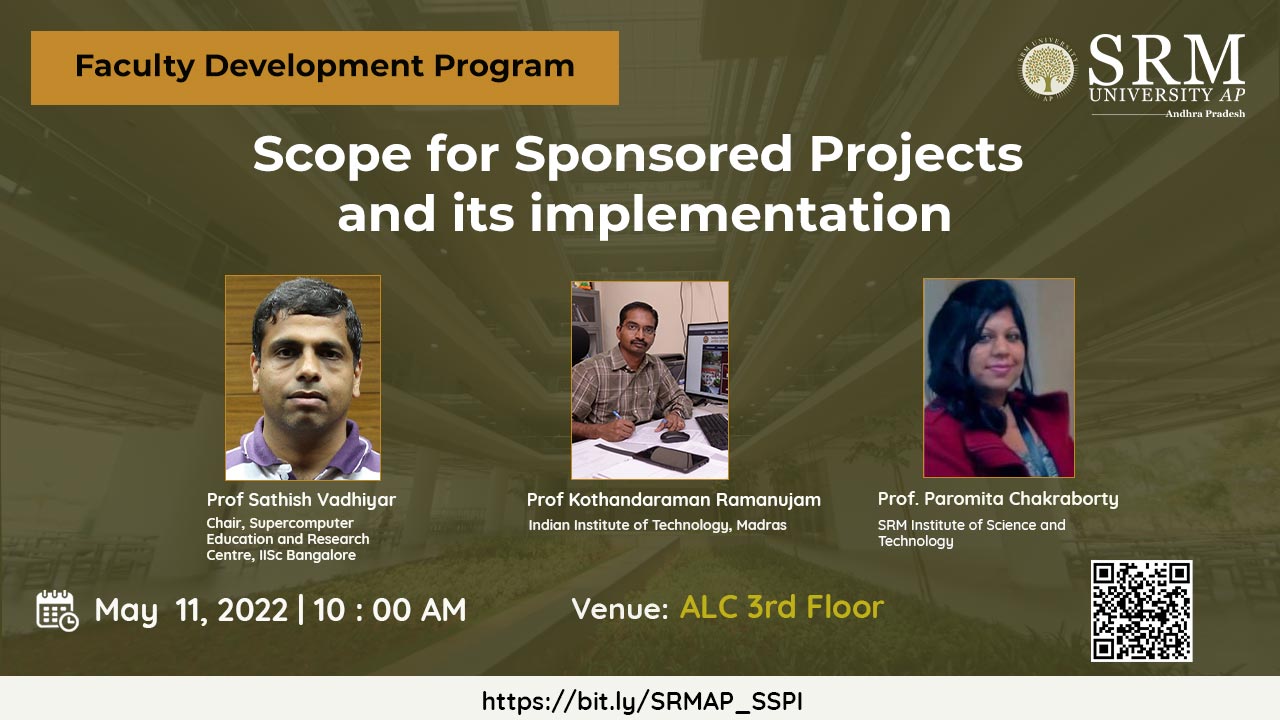
The Department of Physics is organising a Faculty Development Program on ‘Scope for Sponsored Projects and its Implementation’ with eminent academicians, Prof Sathish Vadhiyar, Chair, Supercomputer Education and Research Centre, IISc Bangalore and Prof Kothandaraman Ramanujam, Indian Institute of Technology, Madras.
Date: May 11, 2022
Time: 10.00 am
Venue: ALC 3rd Floor
Discussing the scopes and challenges of such sponsored projects is inevitable as it determines the progress in its execution. Documenting a list of the project goals, deliverables, tasks, costs and deadlines is, therefore, an important part of this process. This will help in establishing the objectives of the project, analysing its limits, and providing a roadmap to move ahead.
Prof Sathish Vadhiyar will deliver a talk on the National Supercomputing Mission (NSM) Program which was introduced by the government of India with an aim to connect national academic and R&D institutions with a grid of high-performance computing facilities. This is an effort to improve the number of supercomputers owned by India. Prof Kothandaraman Ramanujam will provide a brief awareness regarding consultancy projects set up with the industry through his talk. The session will be wrapped up by Prof Paromita Chakraborty who will give an overview of funded projects and bilateral projects.
Join here for an informative session.
- Published in Departmental Events, Events, Physics
In conversation with Prof B S Murty, Director, IIT Hyderabad
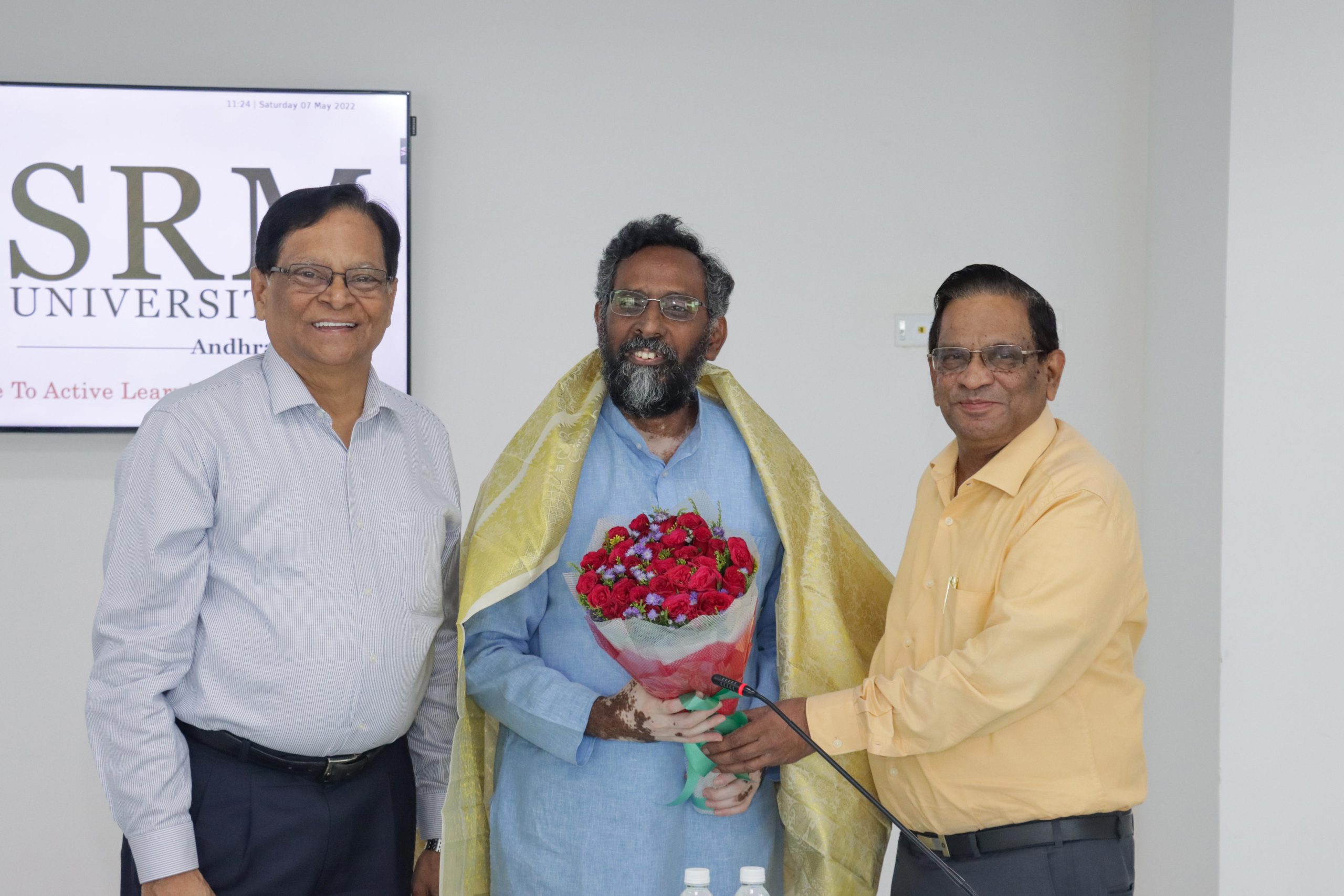
SRM University-AP organised an interactive session with Prof B S Murty, Director, IIT Hyderabad, on May 7, 2022, to enhance the research collaborations and capabilities of the institution. Honourable Vice-Chancellor, Prof V S Rao; Pro Vice-Chancellor, Prof D Narayana Rao, all the faculty members, and research scholars took part in the conference.
The meeting deliberated on the need to develop platforms for effective research collaborations across multiple disciplines to maintain successful research careers. It accentuated on the necessity of bringing together inter-disciplinary resources, culture, talent, and scientific knowledge to enhance the depth and breadth of research capabilities. Building intensive research networks and making relevant contributions towards the inclusive development of the society were the major focus points of the discussion.
Prof V S Rao welcomed the gathering and introduced the guest of the day, Prof B S Murty. He reminisced over the long association with Prof Murty, the much renowned Indian metallurgist who has been recognised with the highest science award in the country.
Prof B S Murty put forward the need for bringing multidisciplinarity into the engineering course framework. According to him, the cross-pollination of ideas across the disciplines of technology, medicine, and environmental management is the ideal way to encourage inclusive development in society. He mentioned a few such pioneering programmes such as M.Tech in Medical Device Innovation and E-Waste Management, B.Tech in Computational Engineering and Microelectronics introduced in IIT Hyderabad. He concluded the session by emphasising the vitality of accelerating research across the healthcare sector as well as the need for orienting research in tune with the industrial demands.
Prof D Narayana Rao gave a brief overview of the research culture nurtured in the university. He presented the list of research publications, patent publications and various other accomplishments of the university’s faculty and students. He also gave a brief introduction to the various centres of excellence established at the university. By giving an outlay of the initiatives such as research collaborations with AIIMS Mangalagiri, SVMC Tirupati, and multiple other programmes like the University Distinguished Lecture Series, he shed light on the steps taken by the institution to promote research and development activities across the region. Prof Narayana Rao solicited collaboration with IIT Hyderabad, particularly in the areas of Artificial Intelligence (AI), additive manufacturing of bio-implants, and battery electrodes for Li-ion batteries.
- Published in News, Research News

